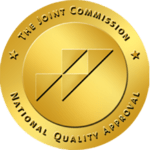When it comes to entering recovery, not having a plan is like jumping out of a plane without a parachute. Recovery is likely going to be the single most difficult thing you may encounter in your life, so you don’t want to take it lightly. In fact, it requires a lot of strength and confidence to handle it successfully. Thankfully, having an addiction recovery plan can give you just that. As you prepare to enter recovery, there are steps you can take when creating an addiction recovery plan.
At Westwind Recovery®, our team of professionals can help people when they are creating an addiction recovery plan. We want people to be fully prepared to embrace recovery when they begin at our addiction treatment center. Find out more about creating an addiction recovery plan or our addiction recovery center from our Westwind Recovery® team today by calling us or filling out our online form.
What Is a Recovery Plan For Addiction?
An addiction recovery plan helps an individual navigate their addiction treatment and recovery. It is a tool that addiction treatment professionals can use to help tailor addiction treatment to each individual’s unique needs and goals.
Why Is a Recovery Plan Important?
Having a detailed and comprehensive addiction recovery plan is important for several reasons. First, it can help an individual better understand their addiction and what they need to do in order to recover. Second, a recovery plan can provide structure and support during addiction treatment and beyond. Finally, a recovery plan can increase the chances of successful long-term sobriety.
Why Create a Recovery Plan For Addiction?
Creating a recovery plan is an important step in addiction treatment. A recovery plan can help an individual:
- Understand their addiction
- Set goals for treatment
- Stay on track during treatment
- Find support after treatment
How Do I Create an Addiction Recovery Plan?
There is no one-size-fits-all addiction recovery plan. However, there are some key components that should be included in every addiction recovery plan. These components include
- A clear and concise statement of the individual’s goals for treatment and recovery
- A detailed description of the individual’s current addiction
- A list of potential triggers for substance abuse
- A plan for how to avoid or manage these triggers
- A list of people who can provide support during treatment and recovery
- A description of the treatment methods that will be used
- A timeline for treatment and recovery
- A relapse prevention plan
Preparing to Create a Recovery Plan For Addiction

It is also important to understand that addiction recovery is a lifelong process. There is no “cure” for addiction, but it is possible to achieve long-term remission. In order to maintain sobriety, individuals in recovery must continue to follow their treatment plan and participate in aftercare programs such as 12-step meetings or therapy.
Creating a detailed and comprehensive addiction recovery plan can seem daunting, but it is an important step in the journey to sobriety. By taking the time to create a plan, you are more likely to stick to your treatment and achieve long-term success.
The First 8 Steps in Creating an Addiction Recovery Plan
1. Gather Information and Get Organized
Before you can put any plan together, you have to gather information. You will want to discover everything your plan needs, such as how to put it together and essential contact information. And, because you absolutely will not want this useful information lying around in a mixed-up fashion, you will want to get yourself a binder or other means of organization. This will help you keep your information where you need it and help you keep track along the way.
2. Make Note of Your Feelings
As you enter recovery, you will want to monitor your feelings. It is incredibly common for you to have a wide range of emotions as you juggle this process. You will want to keep a written record of these feelings.
When doing so, include
- How you are feeling mentally and emotionally
- How you are feeling physically
- What you were doing when the feeling came about
- Who you were with at the time
- Where you were at the time
This step gives you a record that will be a clear way to see patterns.
3. Look at Your Whole Person
When designing your plan, you want to look at your whole person. Addressing your recovery solely will not help you if there is an underlying medical or mental health condition. You need to make sure all these aspects are part of your plan.
After treatment, continue to see a therapist and your medical doctor for regular check-ups. This step requires you to monitor your progress as you go through recovery. Make a list of your plans to visit and the time frame involved, such as once per week, twice per month, etc.
4. Recognize Your Triggers and Maintain a Plan of Attack
There are some triggers that you know and others that you may not even suspect until they are upon you. Your written, organized recovery plan for addiction is the perfect place to keep all of your information together.
For this step, start by making a list of your triggers that could put you at risk for using. And be specific. If there is a certain place, person, or activity, list it. Then, take it a step further and put together the list of follow-up tasks that you need to do, addressing each trigger. In other words, what specific steps will you take to avoid facing these triggers?
This step will take some time and require a bit of thought. It is going to require you to rewire yourself, from the friends you used to have, the places you used to visit, and the things you used to do. Developing new, positive habits can increase your chances for a successful recovery.
5. Take Care of Yourself
Feeling good will help you make better choices. In recovery, you will have to take care of yourself by adopting healthy routines that fuel your mind and body. In this step, you will create a plan for taking care of yourself.
Help your body perform at its best when you:
- Choose to follow a healthy diet of whole foods with minimal processing and avoid fast food and other junk that can negatively impact you.
- Discover an exercise routine you can stick with, whether it is going for a daily walk, run, bike ride, or joining a local adult sports league.
- Get at least eight hours of healthy, solid sleep every single night.
6. Learn to Rely on Your Coping Skills
In this step, make a list of the coping skills you have learned and when you will use them. Keep this as a specific list that you can refer to when you need a reminder, such as when you are feeling stressed or anxious.
This is also the perfect opportunity for you to monitor your usage of coping skills. Keep notes on when you used the skill and how effective it was. The more you know what works best for you, the better opportunity you have for success.
7. Design a Relapse Crisis Plan
As much as we don’t like to talk about it, relapse is very common, especially when you are fresh in recovery. Maybe you won’t need it at all, but just in case, you should design a relapse crisis plan.
Should the situation arise, who would you call, or where would you go? Make sure you have a thought-out plan that you will take and that you have the support of all involved. Should you ever need to use it, this step will see you through.
8. Implement Your Plan
Put your plan into action. You have taken the time to design an addiction recovery plan that will be with you every step of the way. It is organized and carefully constructed, so all you have to do is implement it.
Treatment Options at Westwind Recovery®
If you or a loved one is struggling with addiction, know that you are not alone. Here at Westwind Recovery®, we offer a range of addiction treatment options that can be tailored to your unique needs and situation. Our programs include
- Residential Treatment Program
- Virtual Intensive Outpatient Program
- Outpatient Treatment Program
- Sober Living Program
For more information about our addiction recovery programs, contact us today. We are here to help you on your journey to sobriety and recovery.
Rely on Westwind Recovery® When Creating an Addiction Recovery Plan
Once you feel ready to take the next step, use your recovery plan to stay proactive in your recovery. Let it be an organized reminder of confidence. You have learned all the tools you need for a successful recovery; all you need to do is implement them. You can always rely on our team at Westwind Recovery® if you need support. Contact us today by calling us or reaching out to us online.

Dr. Deena is the Chief Clinical Officer of Westwind Recovery®, an award-winning outpatient treatment center in Los Angeles where she oversees the clinical and administrative program and treatment methods. Dr. Deena is a doctor of psychology and licensed clinical social worker since 1993. LCSW #20628. Originally from the East Coast, Dr. Deena has worked running treatment centers, worked as a therapist in psychiatric hospitals as well as school settings and currently has a thriving private practice in the LA area. Dr. Deena has appeared regularly on the Dr. Phil Show as an expert since 2003. She has also been featured on many other TV shows, podcasts and has contributed to written publications as well as podcasts.





